8.1. Webinar#
Common Misconceptions in CFD: Insights for Accurate Simulations#
Access the Recording of the Webinar
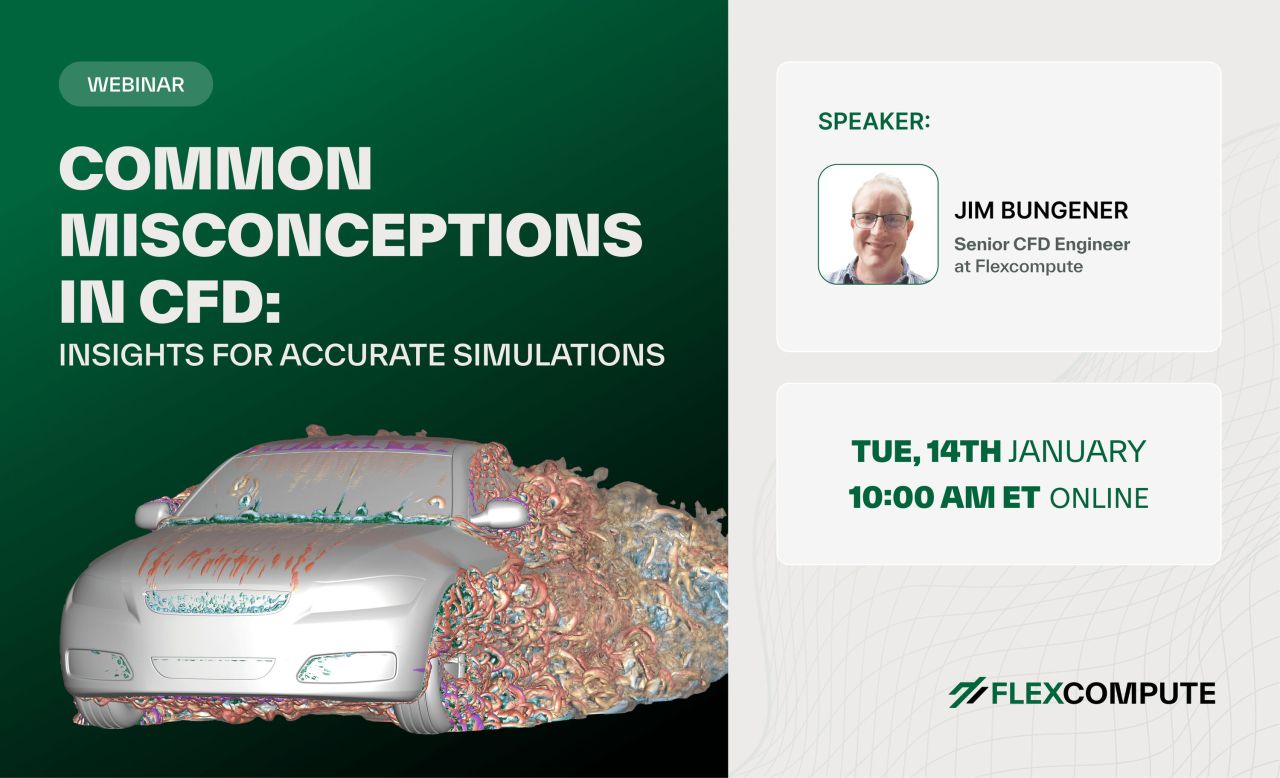
This webinar aims to address some of the most prevalent misconceptions in CFD, providing clarity and insights that can help practitioners and researchers improve the accuracy of their simulations.
By exploring these misconceptions, participants will learn to identify and avoid common pitfalls, enhance their understanding of CFD principles, and apply best practices in their work. By focusing on foundational concepts and practical applications, this session is designed to attract a broad audience from the CFD community, including academic researchers and industry professionals.
Three Learning Objectives:
Identify Common Misconceptions in CFD: Understand the common errors and misunderstandings in CFD, such as the over-reliance on certain models, improper boundary condition setups, and misinterpretations of simulation data.
Improve Simulation Accuracy: Learn best practices to avoid common pitfalls, including the selection of appropriate turbulence models, mesh refinement techniques, and validation methods.
Enhance CFD Applications: Gain insights into how these misconceptions can affect real-world applications and discover strategies to ensure more reliable and accurate CFD simulations.
High-Fidelity Computational Fluid Dynamics (CFD) with GPUs: Insights from NVIDIA & Flexcompute#
Access the Recording of the Webinar
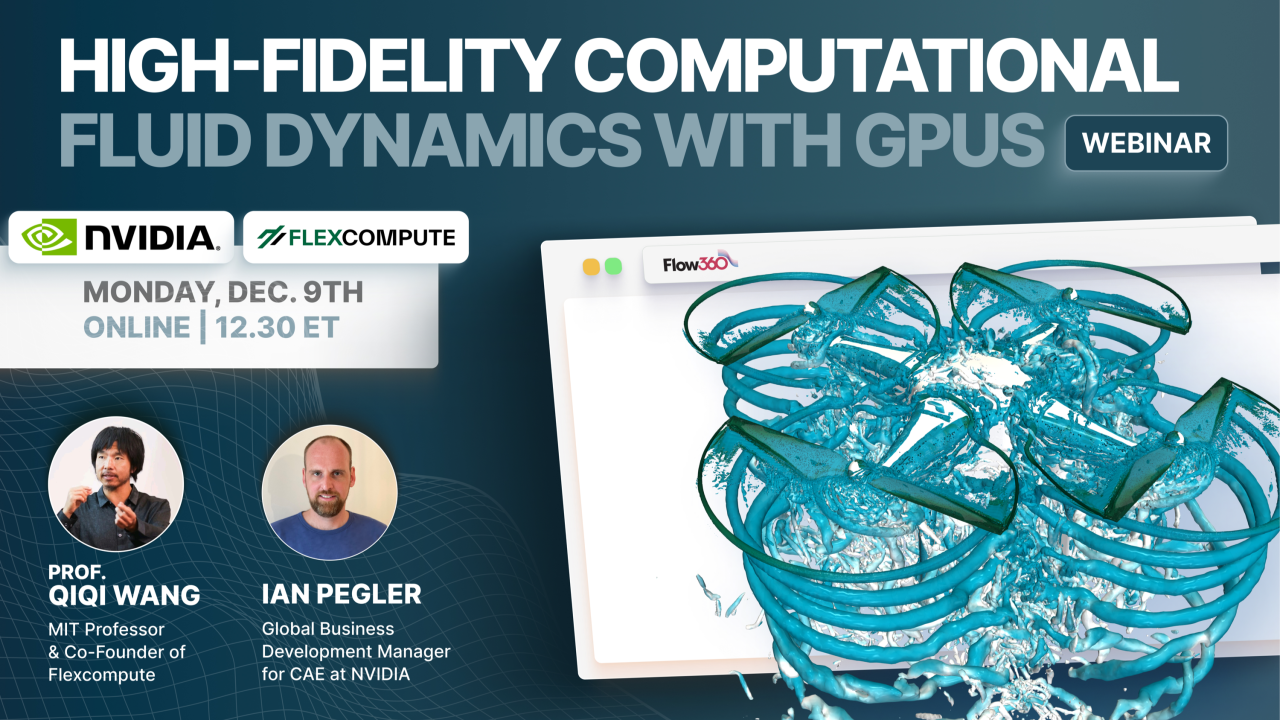
By leveraging the power of GPU technology, Flow360 drastically reduces simulation times and optimizes resource usage without sacrificing precision. In this webinar, we’ll demonstrate how engineers can significantly accelerate their workflows, optimize computational resources, and achieve faster, more accurate results.
Join NVIDIA’s Ian Pegler and experts from Flexcompute as they discuss real-world impacts of simulation. Whether you’re new to CFD or a long-time expert, you’ll gain actionable insights on integrating this groundbreaking tool into your engineering projects to boost efficiency and drive innovation.
Three Learning Objectives:
Master Faster Simulations: Learn how GPU-native Flow360 accelerates CFD workflows, enabling faster product development and decision-making.
Optimize Simulation Resources: Discover how Flow360 optimizes computational resources to achieve high-precision results in less time.
Leverage Real-World Applications: Learn about real-world cases where Flow360 has been applied successfully, providing practical takeaways for engineers.
Dynamic Stability Derivatives Using CFD: Enhancing Flight Stability and Control Analysis#
Access the Recording of the Webinar
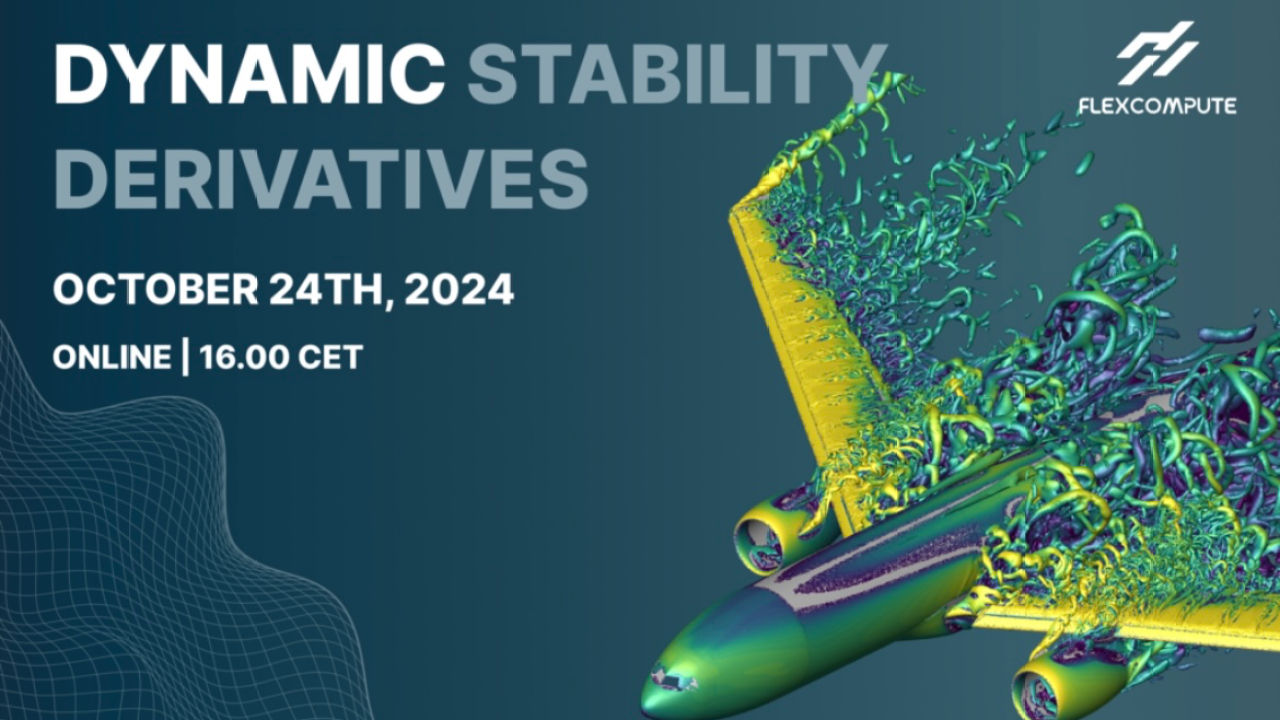
This webinar will focus on using CFD to calculate dynamic stability derivatives, providing insights into how modern simulation techniques can enhance flight stability and control analysis.
Participants will learn to leverage Flow360 to precisely determine dynamic stability derivatives, reducing reliance on traditional empirical methods and costly flight tests. The session will include practical examples, demonstrating the practical application of CFD in modern aerodynamic analysis and certification processes.
Three Learning Objectives:
Understand Dynamic Stability Derivatives: Learn the role of dynamic stability derivatives in flight dynamics and how they influence aircraft stability and control.
Apply CFD Techniques for Enhanced Accuracy: Explore how CFD can compute dynamic stability derivatives more accurately than traditional methods, focusing on practical implementation for rotorcraft and fixed-wing aircraft.
Integrate CFD into Flight Testing and Certification: Discover how CFD-based analysis can complement physical flight testing, streamline the certification process, and provide a more robust understanding of an aircraft’s stability characteristics.
Advancing Automotive Aerodynamics: Insights from the 4th Automotive CFD Prediction Workshop#
Access the Recording of the Webinar

This webinar will present key findings from the 4th Automotive CFD Prediction Workshop, highlighting the performance of various CFD codes, including Flow360, in simulating road-car geometries. We will discuss the efficiency and accuracy of the GPU-native CFD solver Flow360, which significantly reduces simulation time while maintaining high fidelity in results.
In particular, we will showcase a case study based on the DrivAer model, demonstrating how Flow360 accurately captured complex flow physics around critical areas such as the A-pillar and wake regions. This case study will illustrate how Flow360’s RANS and DDES simulations align closely with experimental data, providing engineers with real-time insights for optimizing automotive designs.
Three Learning Objectives:
Workshop Results and Performance Analysis: Gain an understanding of how CFD performs for road-car applications, with a focus on Flow360’s rapid and scalable solutions. Learn about the strengths and limitations identified during the workshop, especially in handling complex geometries and flow physics.
Best Practices for Automotive CFD: Learn to implement best practices for simulation, including improved turbulence modeling (e.g., RANS with k-ω SST & SA) and efficient meshing strategies for enhanced accuracy in simulations. See how real-time RANS feedback can support faster design iterations.
Leveraging Results for Sustainable Development: Explore how the application of scale-resolving simulations such as DDES, combined with GPU-native solvers like Flow360, contributes to more sustainable vehicle designs. Discover how optimizing aerodynamics through precise simulations reduces drag, fuel consumption, and emissions, fostering greener automotive innovations.
Advanced Rotor Modeling Techniques: Enhancing Simulations for Rotorcraft Performance#
Access the Recording of the Webinar
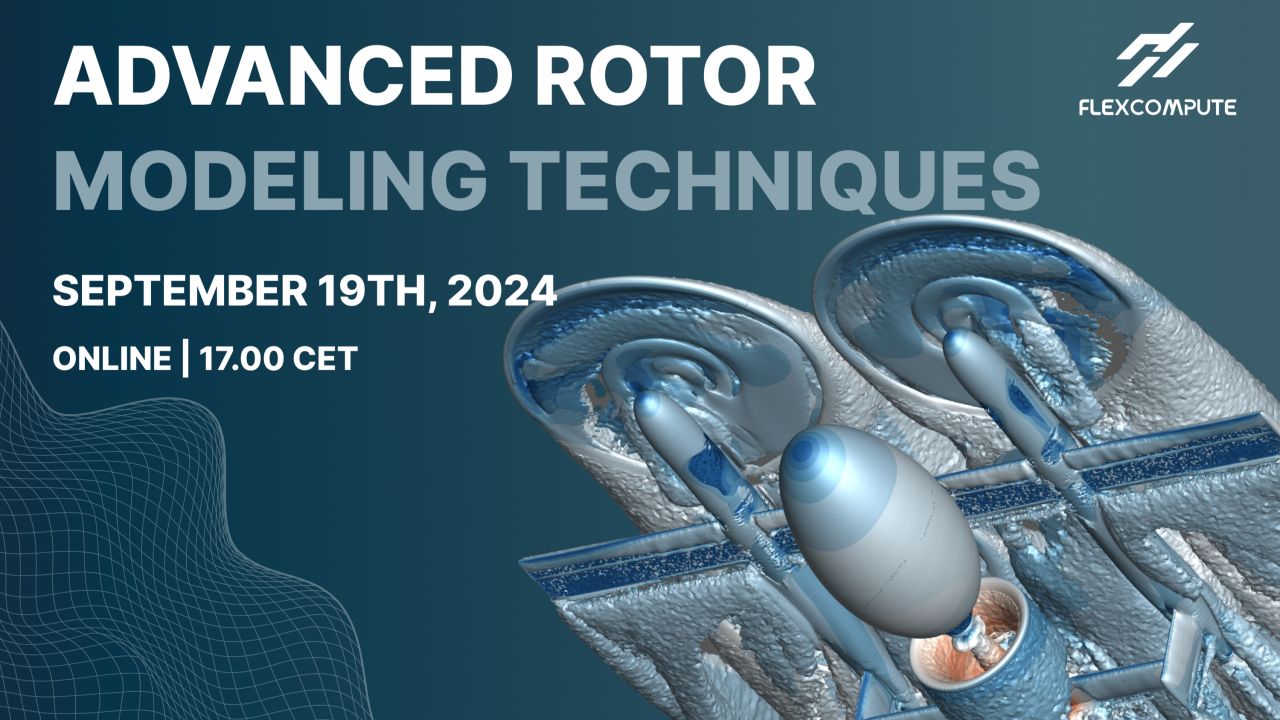
This webinar will explore the latest techniques in rotor modeling, including enhancements to legacy work, the integration of rotor simulations into aero databases, and the application of advanced simulation methods such as Blade Element Theory (BET) and time-accurate rotor simulations.
Through these advanced techniques, engineers can improve the accuracy of performance predictions, enhance the safety and efficiency of rotorcraft designs, and reduce the time and cost associated with physical testing. We will discuss how modern simulation tools and flexible rotor modeling techniques can provide a more comprehensive understanding of rotor dynamics and their impact on overall aircraft performance.
Three Learning Objectives:
Explore Enhanced Rotor Modeling Techniques: Understand the limitations of traditional rotor modeling approaches and learn how updated simulations and methods can overcome these challenges
Integrate Advanced Simulation Methods: Gain insights into using modern aero databases with Blade Element Theory (BET) and time-accurate rotor simulations to predict rotorcraft performance accurately.
Update and Validate Rotor Models: Learn how to refresh outdated rotor modeling techniques and validate simulation results through advanced testing and comparison with experimental data.
An Engineering Guide to Simulating Aeroacoustics: Challenges, Techniques, and Applications#
Access the Recording of the Webinar
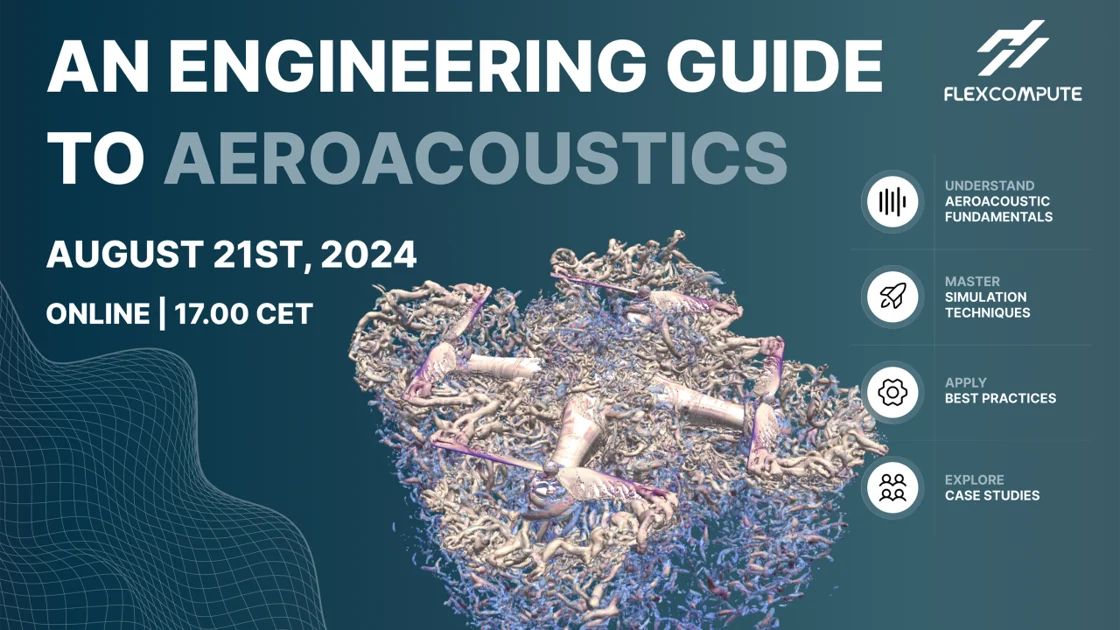
This webinar will focus on rotary-wing applications and how accurately capturing turbulent flow impacts the precision of aeroacoustic simulations.
Through meticulous analysis and advanced numerical simulations using Flow360, engineers can decode the complex interactions between fluid motion and sound waves. This enables precise noise level predictions for various rotary-wing applications.
Three Learning Objectives:
Understand Aeroacoustic Fundamentals: Gain a foundational understanding of how aerodynamic noise is generated and propagated. Learn about different types of aeroacoustic noise and their sources.
Master Simulation Techniques: Explore advanced CFD and CAA techniques for simulating aeroacoustic phenomena. Learn how to effectively set up simulations, including geometry preparation, mesh generation, and boundary condition setup.
Apply Best Practices and Validate Results: Discover the best practices for pre-processing, solver settings, and post-processing in aeroacoustic simulations. Learn how to validate and verify simulation results through grid convergence studies, benchmarking, and comparing results with experimental data.
Mesh and Run a High-Fidelity Aircraft Simulation in Minutes#
Access the Recording of the Webinar
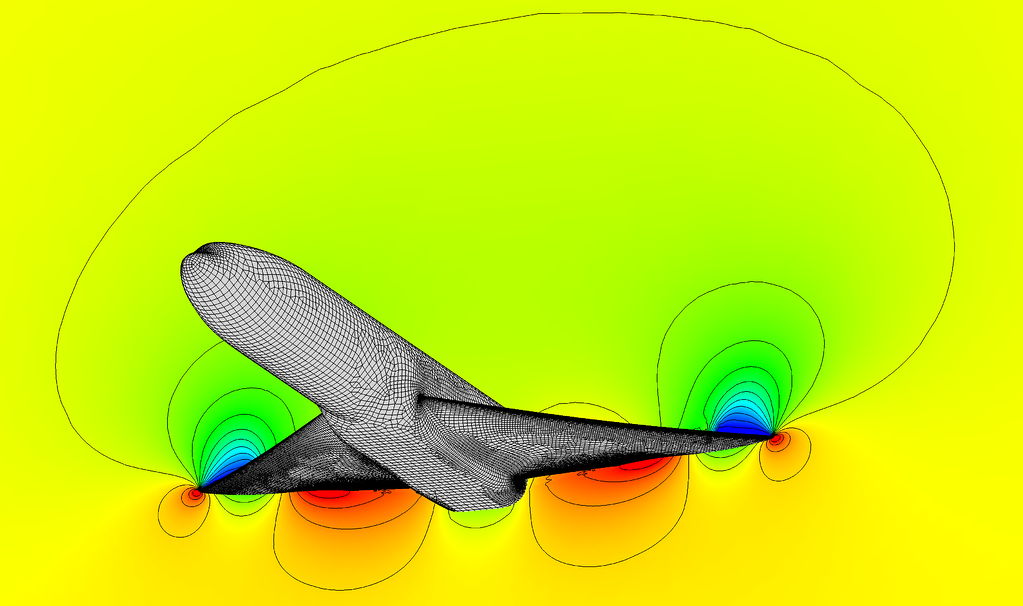
Register today for a live webinar that will help boost productivity while simultaneously ensuring mesh consistency and reliability across your organization. Increasingly complex geometry, larger simulations, and design optimization are just a few characteristics of advanced simulation and design that emphasize the need for more automation and higher throughput. Yet, automation in the absence of control and expertise often has limited applicability, including the inability to maintain consistency throughout the design and simulation process. This can result in an inaccurate, and sometimes unreliable, understanding of a design or the design space, slowing the turn-around time and delaying time to market.
With this in mind, at Pointwise we have been developing a new suite of features called Flashpoint that take the control and expertise we are known for and combines them with deeper automation. Flashpoint, and in particular, the automatic surface meshing component, will help ensure consistency and reliability throughout the meshing process while also providing a framework for encapsulating your organization best practices. We recently collaborated with FlexCompute, the developers of Flow360, a new cloud-based CFD solver, and using the NASA Common Research model as our benchmark, we are demonstrating the ability to mesh and run a high-fidelity aircraft simulation in minutes.
Discover how to:
Automatically generate a high-quality surface mesh for an aircraft geometry.
Construct and populate a hybrid-viscous, hex-core volume mesh in minutes.
Reduce turnaround time and setup, deploy, and simulate using Flow360.